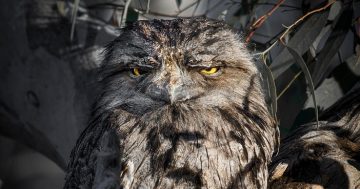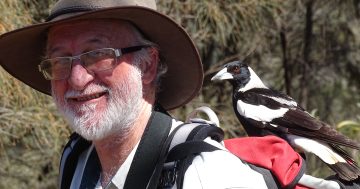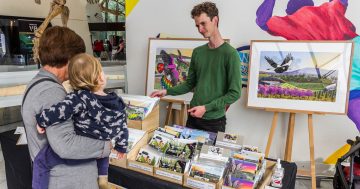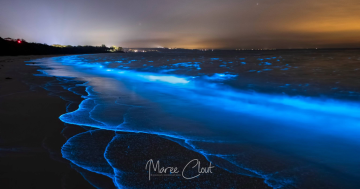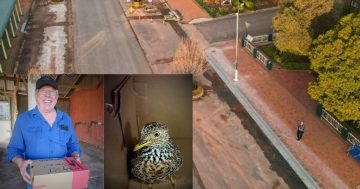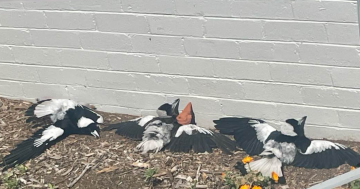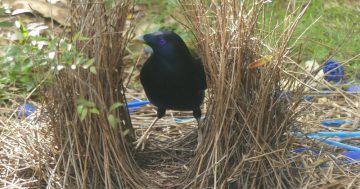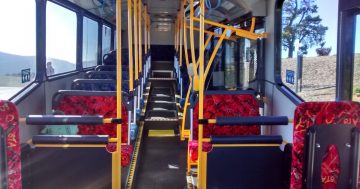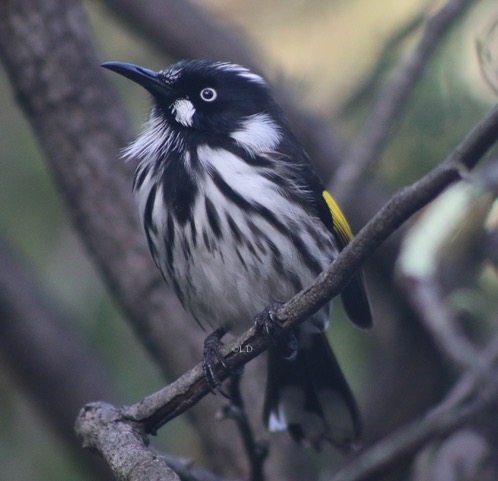
The New Holland Honey Eater. Photo: Larissa Dann.
Courtesy of the COVID-19 lockdown, many us have recently discovered an interest in our neighbourhood birds.
You may have pulled out your phone camera, or dusted off your ‘real’ camera, clogging up the device’s memory with photos of the antics of your feathered visitor.
Then what? What can you do with those pictures of the king parrot snacking on blossoms, or the kookaburra perched on a tree, eying off its prey?
I discovered my passion for all things feathered, furred, leaved, bladed, winged, legged, or fungus-like 18 months ago.
Friends knew that I liked to walk in our local nature reserve, pulled by my eager dogs, trudging along with my ears plugged into radio waves, my thoughts wandering around the world. Occasionally something would catch my attention – early morning sun glinting off diamonds of dew, outlining a silken spider’s web; an echidna snuffling into the ground, searching for lunch; and I would snap a photo or two and post on Facebook
“Larissa,” my friends implored, “put this on the Canberra Nature Map. We need to record the animals and plants of Canberra, when and where they appear.”
Trained as a scientist, I know the importance of data. But it was just too much effort. “Please,” they pled.
Finally, I visited the NatureMapr website. I trawled through its history, the helpful instructions on how to contribute, and in no time I had joined 3000-odd local Citizen Scientists.
Now it was time to load up a photo or two. Drag, drop, location, number of birds, animals or plants. If they’re birds, are they nesting? Then report. So incredibly simple. Why hadn’t I done this earlier?
I am hooked. Totally, completely. Some (my family, for example) might even say obsessed. I sling my camera bag across my shoulder, my SLR on automatic (one day I’ll learn to use the camera to its full capacity), a dog lead, complete with dog, and I disappear. A walk that once took 40 minutes now takes two hours. As soon as I return, I download the photographs of my treasure – phone or computer – and record onto the map.
With a frisson of excitement, I wait for my sightings to be identified. What was that brown blur between the branches? Or that tiny bird with the scarlet breast, ebony wings and white blaze on its brow?
Expert moderators share their experience, giving their time to puzzle over the photos submitted, and my sighting is named and confirmed. I discover the blur was a wee bill (Australia’s smallest bird), the other a male scarlet robin, vulnerable and uncommon.
Since being involved in this Citizen Science community, my eyes are open to what lies outside the four walls of my house. I’ve discovered just how much I didn’t know, how much I don’t know, and how much there is to learn. Now when I load a photo, I try to identify the animal for myself. I open the Species tab and trawl through the photos, swelling with pride when I can name a creature.
Sometimes I visit the South Coast. As I wander along the bush tracks and notice honey eaters flitting around, and wattlebirds squawking, I wish I was back in Canberra so I had a reason to take photos.
Then I discover that the Nature Map has sister sites around the country. Gleefully, I join the Budawang Coast Nature Map and, relieved, I begin uploading photos of my latest finds. I know that if I were to visit further south, or the southern highlands, I could still contribute to a NatureMapr.
Now I have a purpose for my exercise. I walk mindfully, my ears on alert, my eyes looking up, down, across. I feel awake. I am acutely aware of the immense importance of our nature reserves, our national parks, and even the bush along the side of the road.
I know that by adding my photos to the Nature Map, I am contributing knowledge and data that will be useful to scientists, to nature conservation organisations, to government to inform decisions.
Those bird photos you have of your new hobby? They’re valuable. By joining a Citizen Science project such as NatureMapr, you’ll be contributing to a knowledge base on nature. But be warned – once you begin, you may never stop. And where do you go from there? Well, for me, that’s another story.
Larissa Dann is a Canberra author and nature lover.












